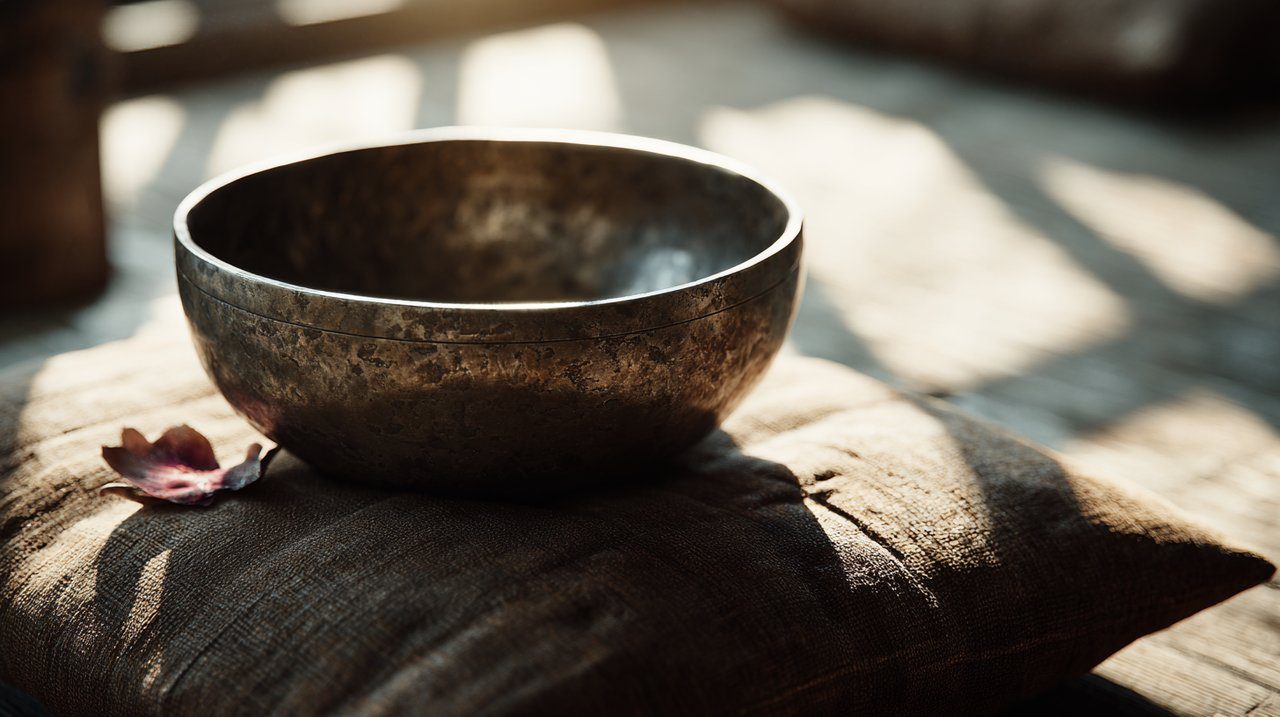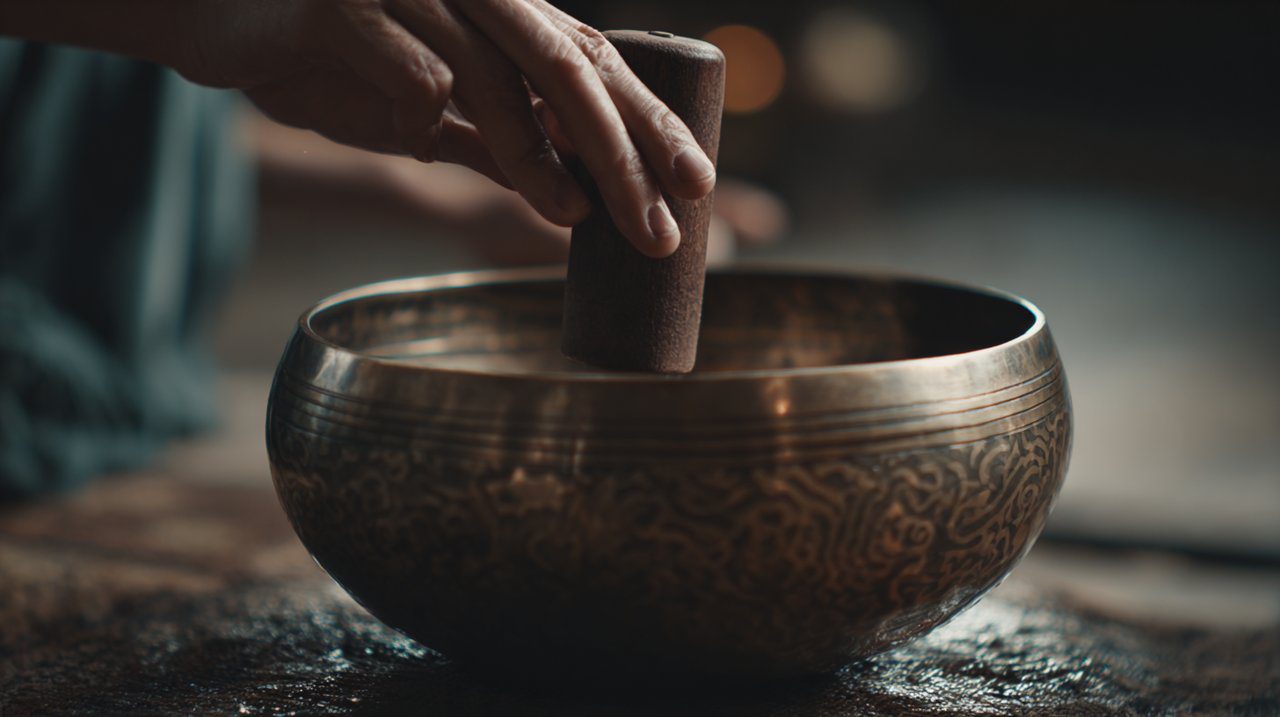Oldest Singing Bowl: Properties, Healing Energy, and Spiritual Significance
Imagine a gentle whisper from the past, carried through centuries by the subtle resonance of a metal bowl. These traditional singing bowls offer more than ancient wisdom; they are a compassionate invitation to stillness. As we explore their enduring legacy, we’ll see them not just as objects, but as gentle guides for deep inner exploration. They remind us of our timeless human quest for peace and harmony, inviting us to pause, breathe, and reconnect with our inner balance.

The Enduring Heritage of Singing Bowls
How do these beautiful, resonant vessels connect us to practices that span thousands of years? Let us embark on a reverent journey to explore their deep heritage. While their exact origins are often veiled in the mists of time, their consistent presence across many spiritual traditions speaks volumes. They reflect humanity’s continuous quest for inner peace and connection. Understanding their journey can truly deepen our appreciation for the quiet wisdom they carry.
Unraveling Historical Threads
While we may not have definitive archaeological proof for the very oldest singing bowl, historical accounts and oral traditions suggest their use reaches back thousands of years. We believe their earliest forms emerged from the revered Himalayan regions, including Tibet, Nepal, and India.
These bowls were far more than simple tools. They were deeply woven into the daily lives and spiritual quests of ancient communities, serving as profound instruments for:
- Spiritual ceremonies: Gently guiding participants into heightened states of awareness and reverence.
- Holistic healing practices: Used by shamans and healers to harmonize subtle energies within the body, fostering a sense of well-being.
- Meditation and focus: Acting as anchors for the mind, helping to facilitate deep concentration and peaceful states.
To understand more about the spiritual frameworks that often accompanied the use of these bowls, you might explore the rich history of Buddhism Origins, Core Teachings and Practices Explained.
Legends whisper of bowls crafted from meteorite fragments, believed to carry special significance and passed down through generations of enlightened masters. While these stories may be woven from myth and deep reverence, they powerfully highlight the profound respect and spiritual importance held for these instruments throughout the ages.
Identifying Authentic Antique Bowls
To truly appreciate an antique singing bowl, we learn to distinguish it from modern reproductions. This requires both a discerning eye and a sensitive ear. Unlike contemporary bowls, which are often mass-produced, older pieces carry the unique, irreplaceable marks of their creation and their long journey through time.
These subtle indicators tell a beautiful story of their heritage:
- Patina and wear: Years of reverent handling, exposure to the elements, and the simple passage of time create a distinct, aged surface. This natural patina speaks of countless moments of stillness and mindful use.
- Irregularities: Each hand-hammered bowl is a testament to the artisan’s touch. Slight imperfections, uneven thickness, or unique textures often reveal its individual creation by a skilled artisan, rather than a machine.
- Sound signature: The resonance of an antique bowl is typically complex and layered. You might notice multiple overtones intertwining to create a rich, enveloping sound. Its sustained vibration can linger for minutes, gracefully fading into a profound silence.
A truly ancient bowl often has a unique ‘voice’—a deep, grounding tone that resonates not just through the air, but through the very fabric of your being, gently inviting you into a space of deep inner quietude.
The Resonant Heart: Material and Vibrational Harmony
What truly gives these ancient instruments their gentle yet profound power? The essence of a traditional singing bowl rests not just in its age, but in the intricate, intentional relationship between its composition and the unique vibrational energy it shares. By understanding these properties, we can more deeply appreciate the subtle yet powerful impact they can have on our well-being.
Intentional Craftsmanship and Composition
Traditional antique singing bowls were often crafted with immense intentionality. They were typically formed from an alloy of multiple metals, often seven distinct ones. These were said to correspond to the seven celestial bodies known to ancient alchemists and astrologers: gold (Sun), silver (Moon), mercury (Mercury), copper (Venus), iron (Mars), tin (Jupiter), and lead (Saturn).
This specific blend, combined with time-honored hammering techniques, contributes to their exceptional acoustic properties. The precise ratios and methods were often closely guarded secrets, passed down through lineages of master artisans. This process embedded a deep sense of purpose and reverence into each creation.
The Symphony of Sound and Inner Balance
When a singing bowl is played, it creates a complex array of frequencies and overtones. These vibrations are not just heard; they are often deeply felt, like a gentle current moving through your body. Many traditions believe these frequencies interact harmoniously with our body’s energy centers, or subtle fields, encouraging a profound sense of balance and holistic well-being.
From a contemporary perspective, the rich, sustained tones and binaural beats from these bowls are known to induce states of deep relaxation and meditative calm. They can gently influence brainwave patterns, fostering a beautiful sense of inner peace.
Imagine the gentle, ever-widening ripples created when a stone softly drops into calm water. In a similar way, the sound waves from a traditional singing bowl are thought to create energetic ripples within and around us. They gently coax our own vibrational field into a state of harmony.
This profound resonance can open the door to a range of beneficial experiences:
- Deep relaxation: Soothing your nervous system and significantly reducing stress and tension.
- Mental clarity: Quieting the mind’s incessant chatter and enhancing your ability to focus.
- Energetic alignment: Supporting the harmonious flow of vital energy throughout your body, promoting a wonderful sense of ease.

Embracing Stillness: Bowls as Guides for Meditation
Beyond their physical qualities and rich history, traditional antique singing bowls serve as profound spiritual tools. They gently guide us toward deeper states of awareness and inner peace. So, how can these ancient instruments become steadfast anchors in our modern quest for tranquility?
Bowls and the Path to Inner Harmony
For centuries, the traditional singing bowl has been revered as a sacred object. It acts as a compassionate bridge between our material world and our spiritual depths. Its sustained tone is often seen as a representation of the primordial sound, a universal vibration from which all creation is believed to emanate.
Engaging with these bowls in meditation is more than just listening. It is about merging with the sound, allowing its gentle resonance to dissolve the perceived boundaries between your self and the universe. This fosters a profound sense of interconnectedness.
This journey of merging with sound can be beautifully enhanced by understanding the sacred forms and meditative power found in ancient practices, as explored in Buddha Poses: Understanding Their Sacred Forms and Meditative Power.
A Guided Ritual of Sound and Stillness
Now, let us embark on a small, personal ritual together. This practice is a gentle invitation to connect with the profound stillness a traditional singing bowl can offer. You can participate even if you are simply visualizing its presence. Allow yourself to be guided by the sound, or the imagined sound, into a space of inner quietude.
- Preparation for Presence: Find a quiet space where you will not be disturbed. Sit comfortably, with your spine gently lengthened and your shoulders relaxed. Gently close your eyes, or soften your gaze downwards, allowing your vision to blur.
- Anchoring the Breath: Bring your gentle awareness to your breath. Feel the natural, unforced rise and fall of your abdomen. With each exhale, consciously release any tension you may be holding in your body or mind. Allow yourself to settle fully into this present moment, letting go of all expectations. This is a crucial step in any practice aiming for inner stability and protection, much like the wisdom found in Black Onyx: A Practical Guide to Grounding and Protection.
- The Bowl’s Gentle Invitation: If you have a singing bowl, please place it gently in the palm of your non-dominant hand. Feel its weight and coolness. Take the mallet in your dominant hand. If you do not have a physical bowl, simply imagine one before you, clear, vibrant, and ready to resonate.
- Creating the Sacred Sound: Begin by gently striking the bowl’s rim or side, or imagine the mallet meeting the metal. Allow a single, clear tone to emerge. Now, if you are playing, begin to slowly circle the rim with the mallet, applying gentle, even pressure. Allow the sound to gradually swell, growing in richness and depth, filling the space around you.
- Becoming One with Sound: Close your eyes fully. Release any urge to analyze or judge the sound. Instead, simply become the sound. Feel its gentle vibrations moving through your hand, up your arm, into your chest, and throughout your entire being. Notice how the sound expands, filling the room, then gracefully recedes, leaving behind a profound, resonant silence. Rest in that deep silence for as long as feels right.
- Gentle Integration: When you feel complete, slowly bring your awareness back to your breath, then gently open your eyes. Take a moment to notice any shifts in your state of mind or body. Carry this newfound stillness, this sense of peace, with you as you move forward into your day.
This practice offers a glimpse into the timeless wisdom held within these ancient instruments. The journey with a traditional singing bowl is a deeply personal one, a continuous unveiling of inner quietude and presence.
As you gently delve deeper into their history and properties, you may find yourself drawn to explore specific bowls that resonate most profoundly with your own path. Understanding the nuances of their sound and origin can guide you in selecting an instrument that truly supports your meditative journey and spiritual growth. In doing so, you transform simple moments into sacred micro-rituals, echoing our initial invitation to stillness and inner balance.
💡 Frequently Asked Questions
Singing bowls are believed to have originated thousands of years ago in the Himalayan regions, including Tibet, Nepal, and India. They were integral to spiritual ceremonies, healing practices, and served as meditation aids.
Authentic antique singing bowls can be identified by their patina and wear from age, irregularities indicating artisanal craftsmanship (unlike mass-produced bowls), and a unique sound signature characterized by complex resonance, multiple overtones, and a sustained vibration.
Traditional antique singing bowls are typically crafted from an alloy of multiple metals, often seven, corresponding to the seven planets known to ancient alchemists: gold, silver, mercury, copper, iron, tin, and lead.
When played, singing bowls produce complex frequencies and overtones whose palpable vibrations are believed to interact with the body's energy centers or chakras. This resonance can facilitate deep relaxation, mental clarity, and energetic alignment, promoting balance and well-being.
In meditation, antique singing bowls are revered as sacred objects and a bridge between the material and spiritual. Their sustained tone is often seen as a representation of the primordial sound 'Om,' helping practitioners achieve deeper states of awareness and inner peace by merging with the sound.








